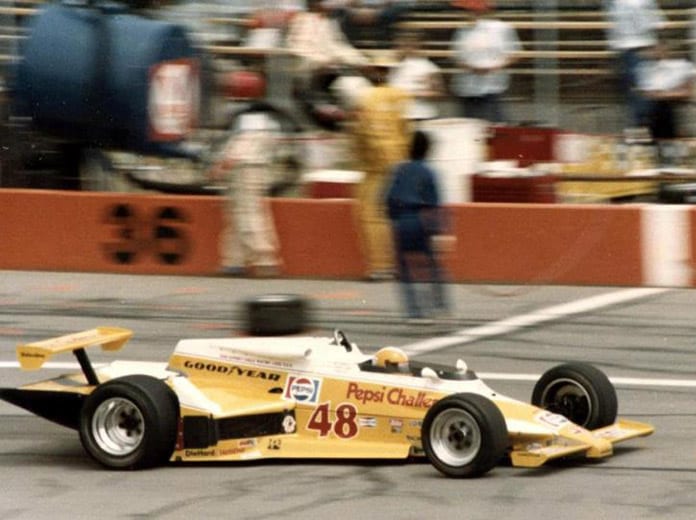Though not as highly acclaimed as some he competed against, Mike Mosley was one of American racing’s most naturally talented drivers. In 2011, when racing historians, journalists and observers were ranking the top 33 drivers in the 100-year history of the Indianapolis 500, Mosley made most of the lists.
While his Indy record doesn’t necessarily reflect it, the experts knew he could handle a race car like few others.
Mosley had the uncanny ability to take an old, nondescript race car and carry it to the front, something he did repeatedly.
In 1972, driving a four-year-old Eagle against the latest aerodynamically advanced McLarens and Lolas in the Indy 500, Mosley drove to the lead from the 16th starting spot, swooped past Gary Bettenhausen, who had dominated the race to that point in his Penske McLaren, and promptly crashed when a wheel came off.
It was a mirror image of his run of the previous year and reminiscent of the bad luck he was often dealt.
Mosley made it from sprint cars to Indy cars about the time when chatting up potential sponsors was becoming as important as the talent behind the wheel of a race car.
Such activity was not Mosley’s style.
By nature he was quiet, reserved and a loner. Described as a racing hippie because of his mustache, John Lennon glasses and laid-back ways, he liked nothing better than escaping to the desert near his Riverside, Calif., home to vent his stress on a motorcycle. But those in the know understood and admired how he could stand on the gas.
Bettenhausen once famously said of him, “Give Mosley a McLaren and we’ll all be running for second.”
Dan Gurney was another who respected Mosley’s natural ability. In 1981, Gurney offered him a ride in his new, swoopy, Chevy-powered Pepsi Challenger Eagle. The Challenger Eagle was an oddity, utilizing an aerodynamic system developed by Gurney’s engineer John Ward.
Known as Boundary Layer Aerodynamic Technology, or BLAT, it involved among other intricacies, a vortex effect that was created in a box-like structure surrounding the engine and transaxle, rather than in side pods that were prevalent on other cars.
That gave the Challenger its unique, dart-like shape. Interestingly, when Gurney took over the Delta Wing project a couple of years ago, his team used some of the 30-year-old BLAT technology in developing it.
From the opening day of practice for the Indianapolis 500, Mosley had the stock-block Chevy roaring and the Eagle soaring. On Pole Day, Mosley put it in the middle of the front row. But during pre-race practice, the Chevy threw a rod, ruining the engine. There was no backup. Chief mechanic Wayne Leary pieced together an engine for the race, but there was little hope that it would last.
It didn’t. The engine gave up after 16 laps.
By Milwaukee, the trick engine that was intended for Indy had been rebuilt. The team arrived at the fairgrounds mile with high hopes the Eagle’s design would be vindicated.
But again, the engine acted up. The problems were resolved, but not before Mosley missed qualifying. The Challenger appeared headed to the trailer early.
Mosley was a fan favorite, however, and Milwaukee’s promoter didn’t want him, or the car he’d put on the front row at Indianapolis the week before, to miss the show. He added Mosley as a promoter’s option, starting last.
That didn’t faze Mosley. Milwaukee was, and is, considered a driver’s track. The track is flat with slower traffic to constantly weave through. Only the best excel there. And Mosley was that. He’d developed an unusual driving style at Milwaukee, running a groove unlike any other. As a result, three of his five Indy car victories came there.
During the 1981 Rex Mays Classic, Mosley put on a driving demonstration long remembered. He passed 12 cars during the first five laps of the 150-lap race and blew past leader Tom Sneva on lap 106. He never let up. When the checkered flag waved, Mosley, incredibly, had a full-lap advantage over second-place Kevin Cogan and two laps on third-place Mario Andretti.
Within three short years, Mosley was gone. His potential was never fulfilled. Returning from a day of riding motorcycles with his son, Mike Jr., he died in a highway accident on March 3, 1984.
Nearly 30 years have slipped by since his loss, but Mike Mosley is still remembered fondly as one of racing’s best.
